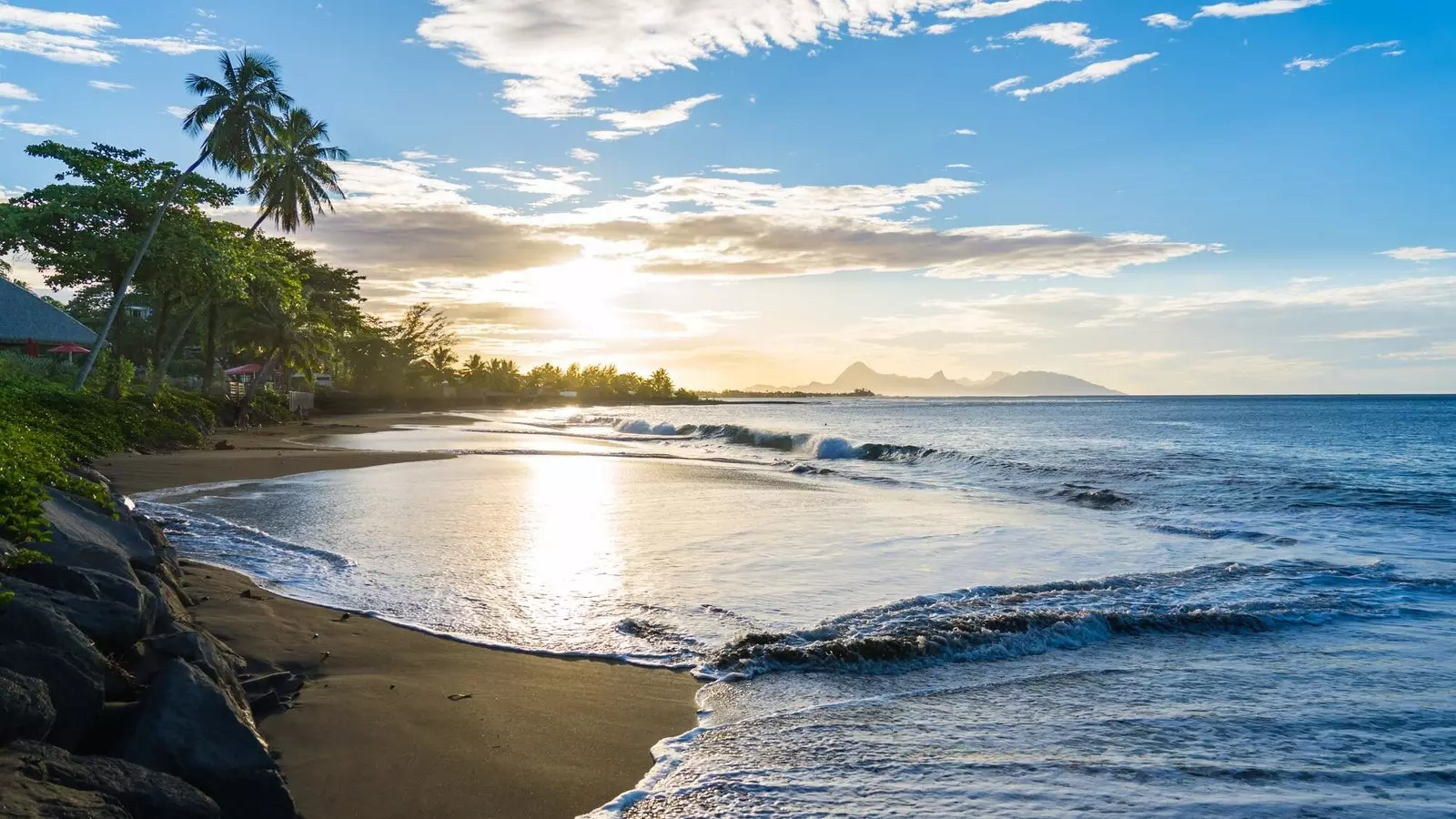
Welcome to French Polynesia.
Updated on the day: 03/12/2021. Many dream of it, although few know what it really is. french polynesia is implanted in the western imaginary like that paradisiacal place of islands pregnant with palm trees and surrounded by blue water impossible for the painter Paul Gauguin became an object of desire at the beginning of the 20th century. However, knowledge about this destination is usually limited to two names: Bora Bora or **Tahiti.**
This article aims to be a journey with a single goal: show that French Polynesia is much more than that , a piece of Europe made up of 118 islands with landscapes ranging from sharp mountains over two thousand meters to pink sand beaches, passing through valleys, waterfalls, jungles and cliffs and an ancient culture who conquered the largest ocean in the world.
FRENCH POLYNESIA
It is not easy to write an article about French Polynesia. Before I began to type words, I encountered the same difficulty that appeared in front of the writer R.L. Stevenson in writing his novel In the South Seas: How to describe a place so linked to the word "paradise"? At the beginning of that work, the Scottish author explained that " nowhere in the world exerts such a power of attraction on the visitor , and the task before me is to communicate something of the meaning of this seduction to travelers who travel with their fantasy while reading a book".
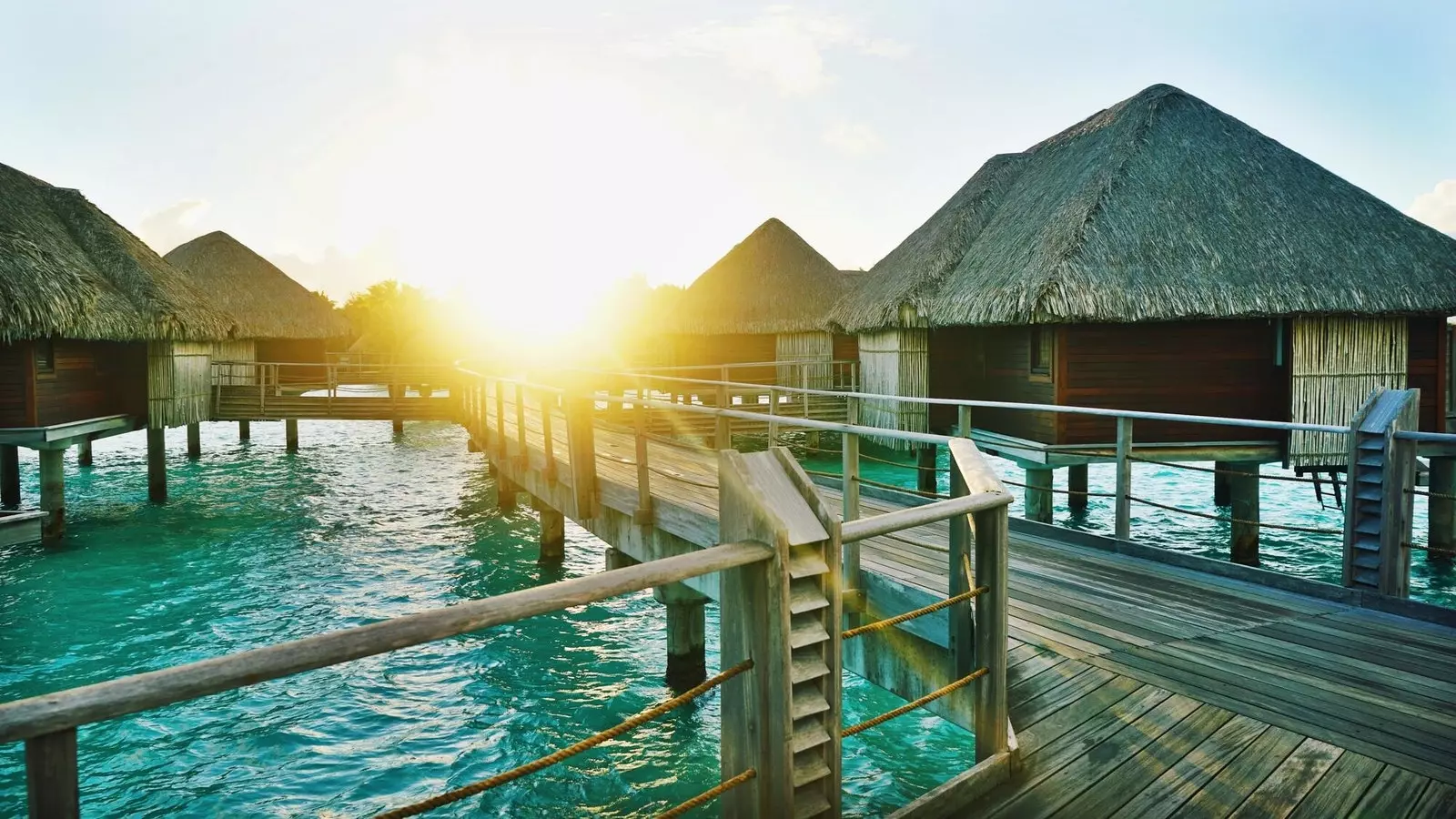
Is this what they call "paradise"?
What is seductive about this place on the planet, both for the travelers of the 19th century, and for the ultra-technological and connected humans of the 21st? The answer is simple: the attraction to the remote, the unknown.
Even today, when we have the opportunity to cross thousands of kilometers with a simple click on a Condé Nast Traveler publication, french polynesia , as well as many Pacific archipelagos, occurs as a place of which we ignore more things than we know , a place wrapped in unknowns where the tribal, the exotic, even the cannibal, continue to resonate in our subconscious.
This lack of knowledge leads to mistakes as common as identifying such a vast space –French Polynesia occupies an area greater than half of Europe– with the name of one of its islands, Tahiti; or simplify it to the landscapes of his idealized paradise, Bora Bora.
Not all French Polynesia is Tahiti (although the official French Polynesia tourism page insists on calling it "The Islands of Tahiti") Nor are Bora Bora's resorts the South Seas beauty standard.
French Polynesia is made up of five archipelagos: Marquesas Islands, Society Islands, Tuamotu Atolls, Gambier Islands, and Austral Islands . The landscapes that can be found in each archipelago are, in some cases, diametrically opposed: from flat islands that barely rise above sea level to steep mountains that reach up to two thousand meters in height.
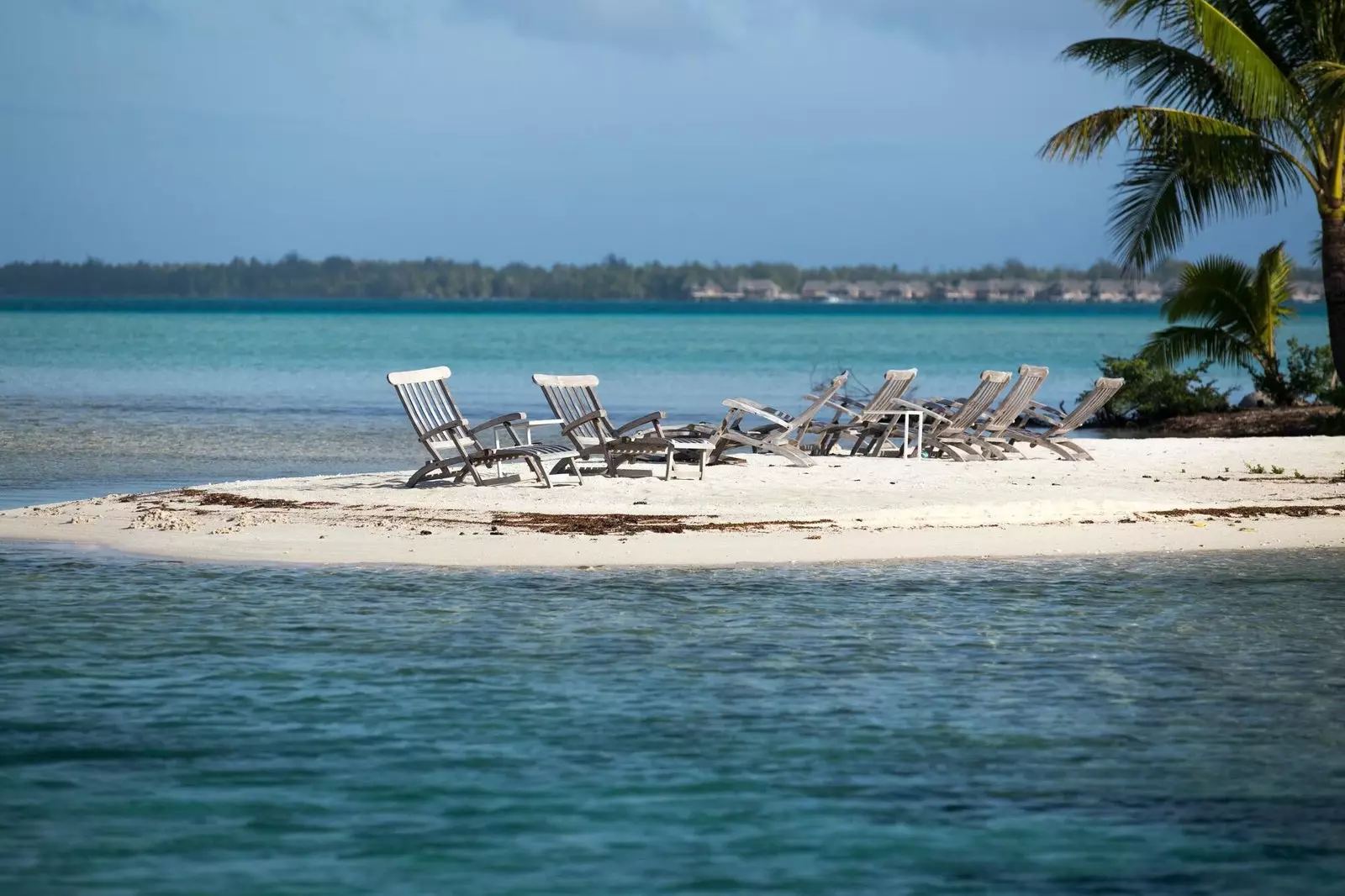
Life in Polynesia, the best life.
Although in this huge expanse of archipelagos different languages are spoken, all are agglutinated in the so-called reo mā’ohi . This is the name given to the set of languages spoken in French Polynesia and which, in turn, form part of polynesian culture , practiced for millennia in the ** Polynesian Triangle **, a region of the Pacific defined by the three archipelagos that form its vertices: ** Hawaii , Easter Island and New Zealand **.
This triangle was inhabited in the final phase of what is possibly the most ambitious migration process in human history : the expansion of different civilizations that moved from Southeast Asia to the Pacific in a human movement that began around 3400 BC and culminated around 1200 AD with the arrival in New Zealand.
A JOURNEY THROUGH FIVE ARCHIPELAGOS
Marquesas Islands
Our journey begins at Marquesas Islands, Fenua Enata –Land of Men– in Marquesian language. This archipelago, the furthest of all - is located 1800 kilometers from Tahiti , the capital of French Polynesia–, is the antithesis of landscapes with Bora Bora azure blue lagoon.
The Marquesas are volcanic islands and, because they are the youngest of all, are devoid of coral reef ring . This reef, which can be found off Bora Bora and other islands in the Society Archipelago, appear according to the central island –an extinct volcano– sinks into the water, making the reef around it.
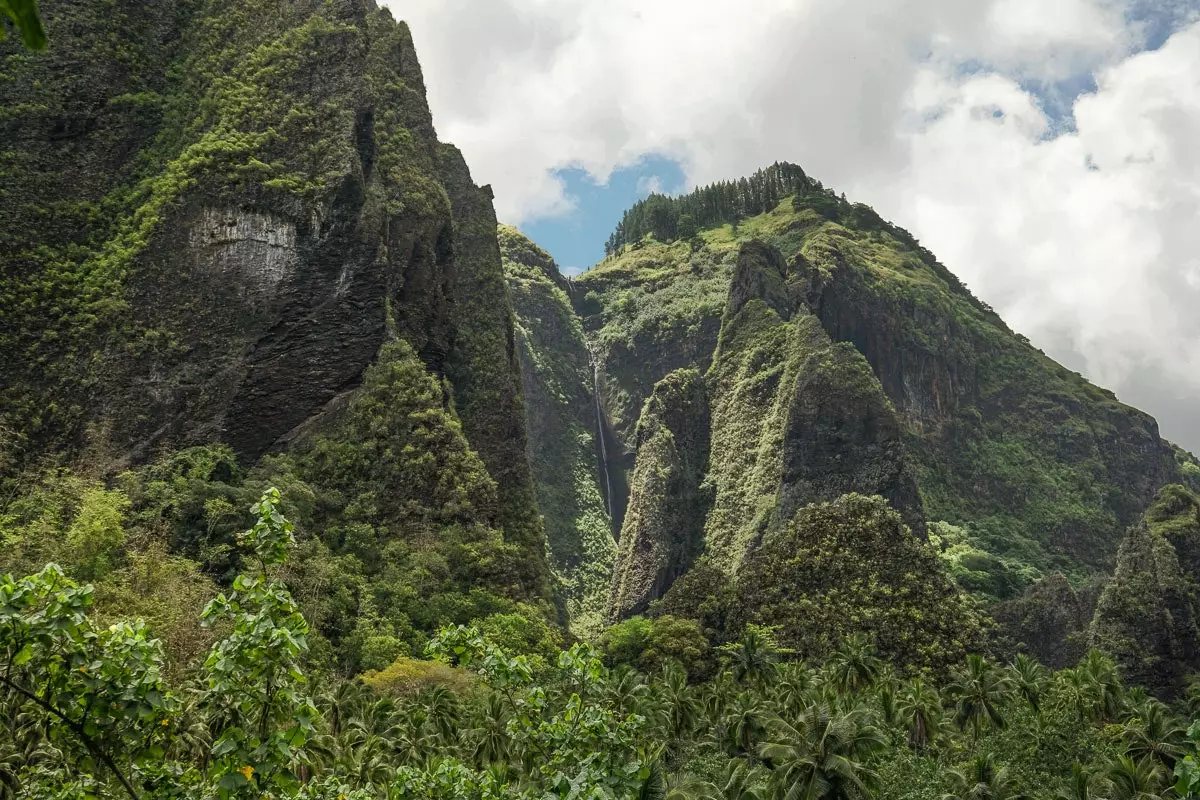
Nuku Hiva
The Marquesas are shown as abrupt pieces of land torn apart by the sea that reach their ceiling in the more than 1200 meters of the Mount Oave, in Ua Pou –island of vertiginous geography, with its enormous basaltic columns, "like pinnacles of an ornate and monstrous church", according to Stevenson's description– and of the Mount Temetiu, on Hiva Oa.
This last, hiva oa , apart from being the second largest of the Marquesas after its capital, Nuku Hiva , is famous for being the last living residence of Paul Gauguin , which left Tahiti looking for that wild and authentic place that he had pursued since he left Europe in 1891.
Gauguin was not wrong: the Marquesas, even today, is the archipelago of French Polynesia where the ancestral Polynesian culture remains more present through its dances -either haka –, its crafts, its archaeological remains or its famous tattoo art.
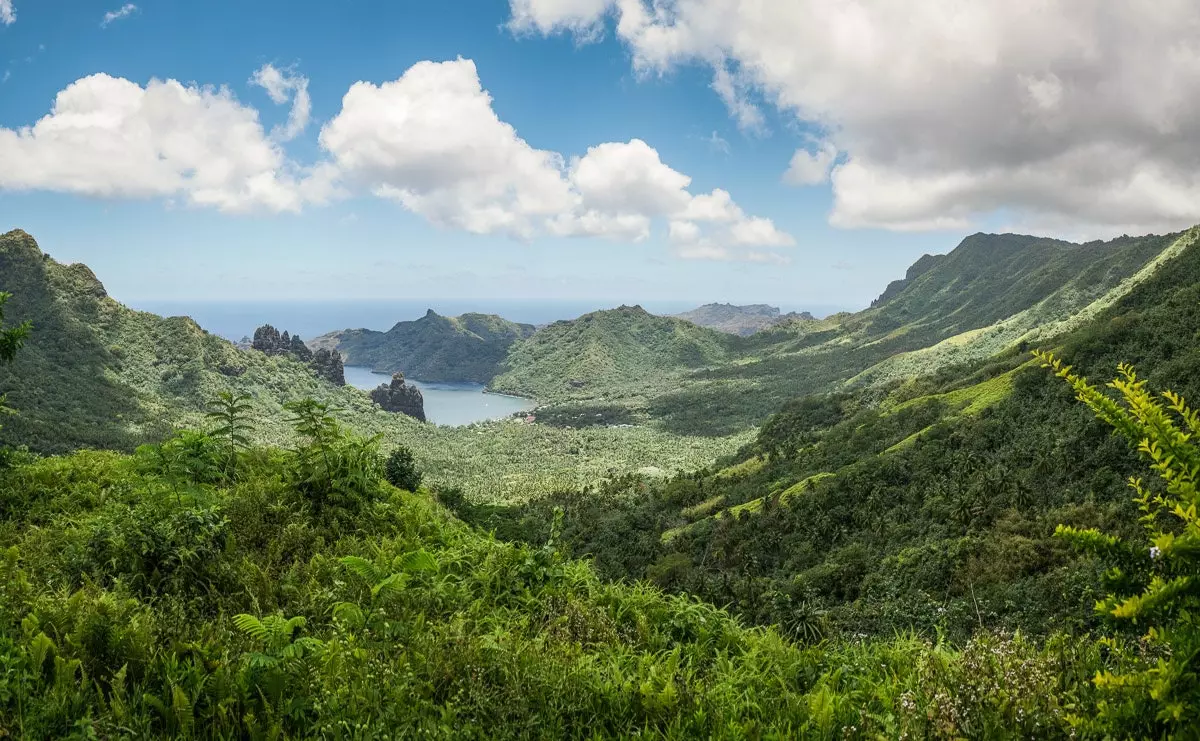
The green of Nuku Hiva is mesmerizing.
Tuamotu Archipelago
Between the Marquesas and the Sociedad archipelago are the Tuamotu , one of the best diving spots on the planet . The Tuamotu are the largest group of atolls in the world, a type of flat, narrow, ring-shaped islands covered with palm trees and sandy beaches that range from snowy to yellow and reddish tones.
This ring of earth causes the formation of a azure blue ocean lagoon that allows the explosion of marine life, both animal and plant species. Between the 78 atolls that form the archipelago stand out Rangiroa , the largest of all – it is the second largest atoll in the world – and Fakarava , declared UNESCO biosphere reserve along with the other six islands that make up the homonymous commune.
Society Archipelago
The central axis of French Polynesia is located in the society archipelago , where Tahiti meets – with the capital, Papeete - Y Bora Bora , the two islands that account for much of the island tourism. This archipelago is chosen by most tourists , taking the cake islands of Moorea, Raiatea, Tahiti and Bora Bora.
However, the Society has some less traveled gems, such as the Huahine Island and above all, Maupiti, the call “Little Bora Bora” because of its similarity to its neighboring island.
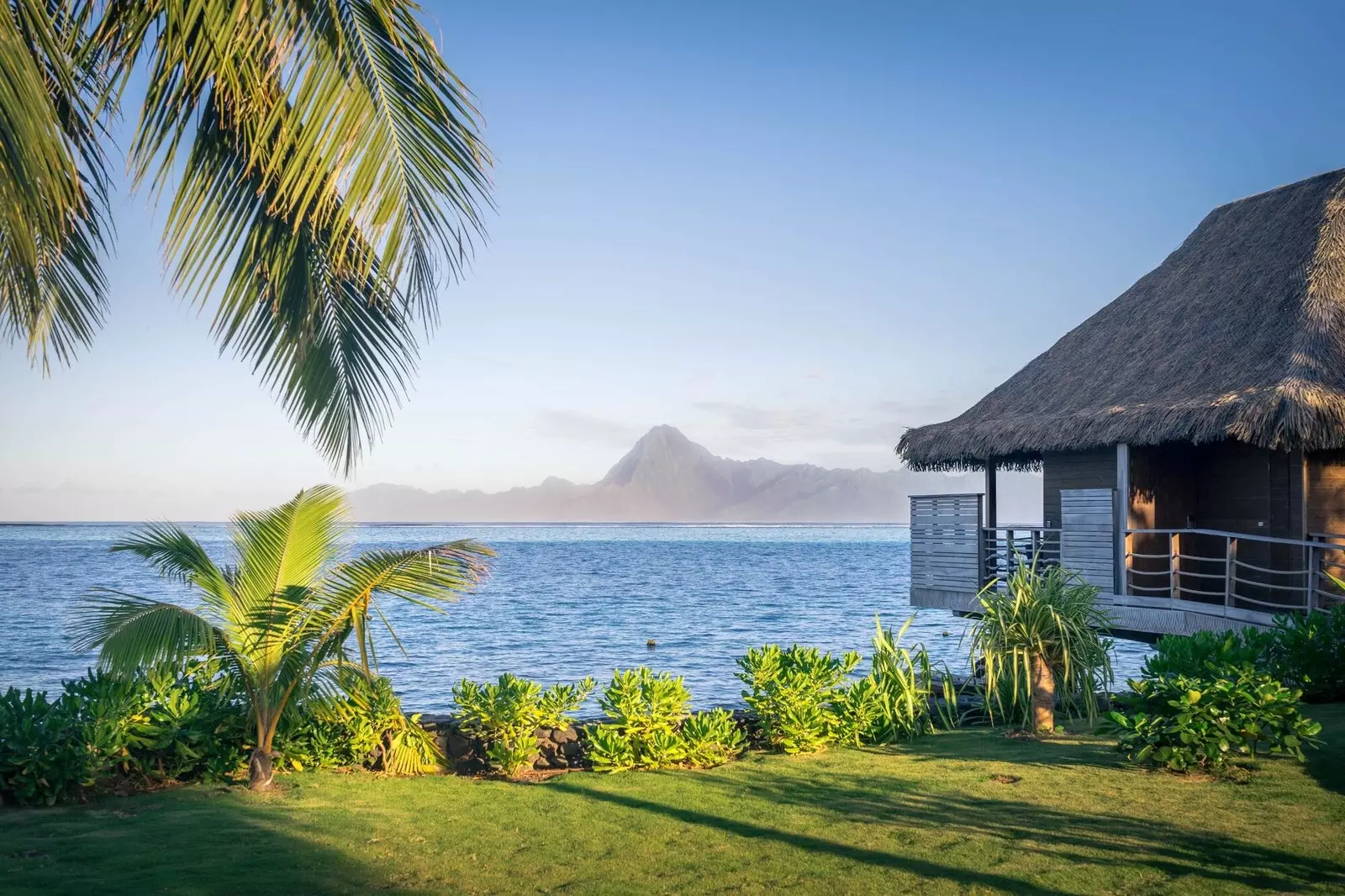
We wouldn't mind waking up in Papeete.
In case of Maupiti is a strange case that invites hope: its inhabitants have not allowed the entry of resorts or large hotel spaces –those instagrammable places made up of huts and wooden walkways that extend over the sea and have little to do with Polynesian culture–.
This fact occurs for three reasons: avoid the overcrowding that places like Tahiti, Bora Bora or Moorea suffer , preserve the natural space and prevent the income from going to a large hotel company, since the Maupiti accommodations are managed by the inhabitants themselves through family pensions.
On the tour of French Polynesia, the archipelagos of the Society, Tuamotu and even the Marquesas , are part of the most common route. Those who almost always remain marginalized are the very unknown archipelagos of the Australis and the Gambiers.
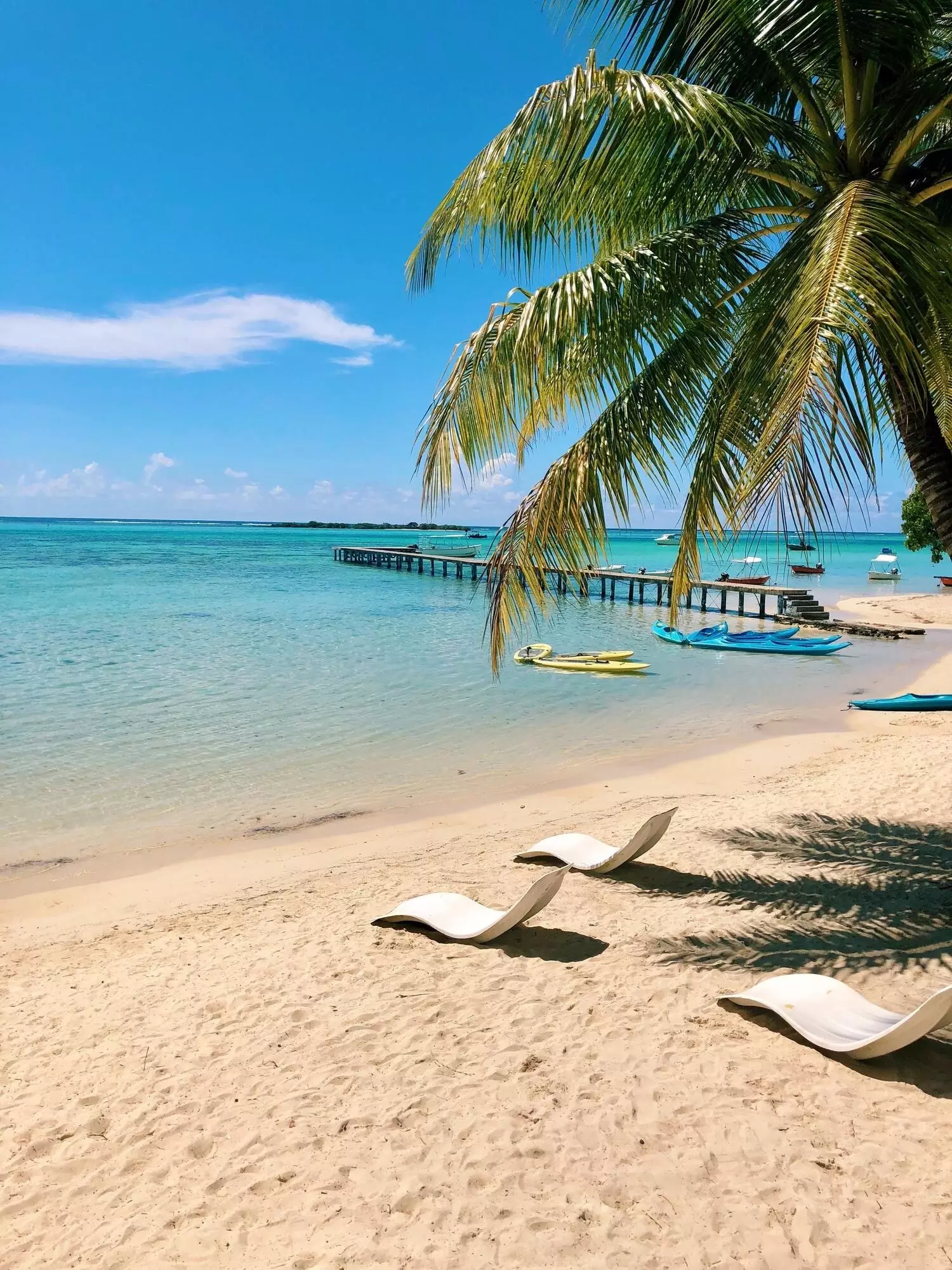
Are we moving to Moorea?
The Austral and Gambier Islands
Located south of Tahiti, the Australes, have a type of mixed geography between the Marquesas and the Society , with islands lacking lagoon and coral reef , as the case of Rapa Iti or Rurutu , famous for its stalactite caverns; and islands with an oceanic lagoon, as in the case of tubai , the largest of all the Australs.
The Gambiers , on the other hand, are found in the southern extension of the Tuamotu , although they are considered a separate archipelago. On a cultural and linguistic level, the Gambiers are closer to the Australes and its conformation is somewhat unusual, since the four islands that make up the archipelago are surrounded by the same ring of coral, being its capital, Mangareva , the only inhabited.
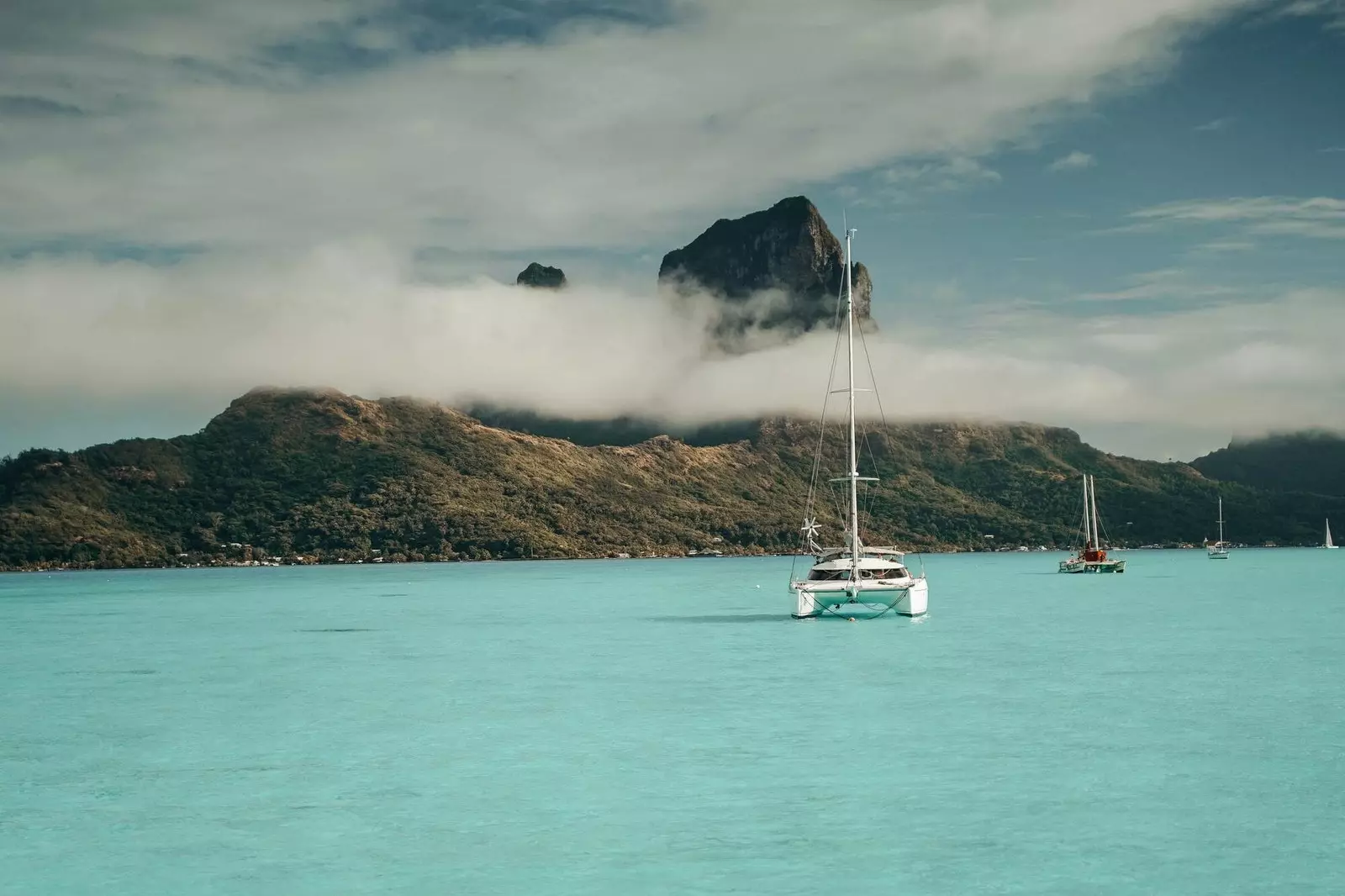
Blue and green are the two colors of French Polynesia.
118 islands, 118 options in which the sensation for the traveler will always be the same: a feverish fascination –almost vertiginous– for being on a tiny surface of land surrounded by ocean. That fascination is actually the origin of what Stevenson tried to explain in his book , that power of attraction that many nineteenth-century travelers experienced: " few of the men who come to the islands leave them; they grow old where they once settled; the shadows of the palm trees and the trade winds fan them until they die", wrote the Scottish author in another of the chapters of In the South Seas.
Examples can still be seen today of these mostly French men – and women – who once left their native Europe, never to return.
Decades, centuries will pass ; humans will become more and more technological and yet places like the islands of French Polynesia will continue to bring about these kinds of transformations.
Although it will be necessary to go there to experience them.
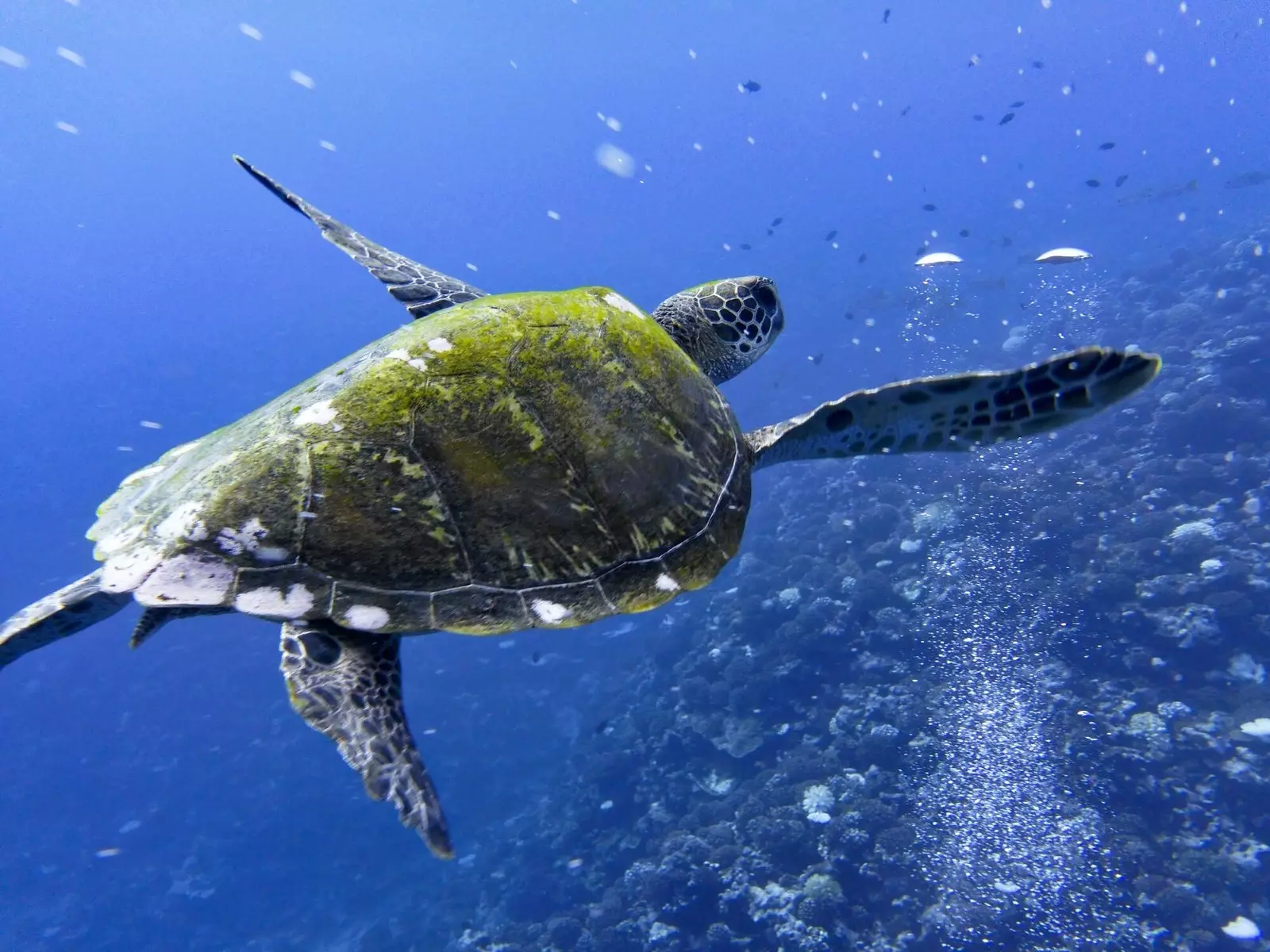
It's decided: we want to stay in French Polynesia!
